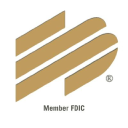/ factorpad.com / stocks / f91grj.html
An ad-free and cookie-free website.
Our quantitative data points are meant to provide a high-level understanding of factors in equity risk models for Enterprise Financial Service. Portfolio managers use these models to forecast risk, optimize portfolios and review performance.
We show how EFSC stock compares to 2,000+ US-based stocks, and to peers in the Finance and Insurance sector and Commercial Banking industry.
Please do not consider this data as investment advice. Data is downloaded from sources we deem reliable, but errors may occur.
 Enterprise Financial Services Corp, with approximately $9.7 billion in assets, is a financial holding company headquartered in Clayton, Missouri. Enterprise Bank & Trust, a Missouri state-chartered trust company with banking powers and a wholly-owned subsidiary of EFSC, operates 39 branch offices in Arizona, California, Kansas, Missouri, Nevada, and New Mexico, and SBA loan and deposit production offices in Arizona, California, Colorado, Illinois, Indiana, Massachusetts, Michigan, Nevada, Ohio, Oregon, Texas, Utah, and Washington. Enterprise Bank & Trust offers a range of business and personal banking services, and wealth management services. Enterprise Trust, a division of Enterprise Bank & Trust, provides financial planning, estate planning, investment management, and trust services to businesses, individuals, institutions, retirement plans and non-profit organizations.
Enterprise Financial Services Corp, with approximately $9.7 billion in assets, is a financial holding company headquartered in Clayton, Missouri. Enterprise Bank & Trust, a Missouri state-chartered trust company with banking powers and a wholly-owned subsidiary of EFSC, operates 39 branch offices in Arizona, California, Kansas, Missouri, Nevada, and New Mexico, and SBA loan and deposit production offices in Arizona, California, Colorado, Illinois, Indiana, Massachusetts, Michigan, Nevada, Ohio, Oregon, Texas, Utah, and Washington. Enterprise Bank & Trust offers a range of business and personal banking services, and wealth management services. Enterprise Trust, a division of Enterprise Bank & Trust, provides financial planning, estate planning, investment management, and trust services to businesses, individuals, institutions, retirement plans and non-profit organizations.
Many of the following risk metrics are standardized and transformed into quantitative factors in institutional-level risk models.
Rankings below represent percentiles from 1 to 100, with 1 being the lowest rating of risk.
Stocks with higher beta exhibit higher sensitivity to the ups and downs in the market. (↑↑)
Stocks with higher market capitalization often have lower risk. (↑↓)
Higher average daily dollar volume over the past 30 days implies lower liquidity risk. (↑↓)
Higher price momentum stocks, aka recent winners, equate to lower risk for many investors. (↑↓)
Style risk factors often include measures of profitability and payout levels.
Companies with higher earnings generally provide lower risk. (↑↓)
Companies with higher dividend yields, if sustaintable, are perceived to have lower risk. (↑↓)
/ factorpad.com / stocks / f91grj.html
A newly-updated free resource. Connect and refer a friend today.